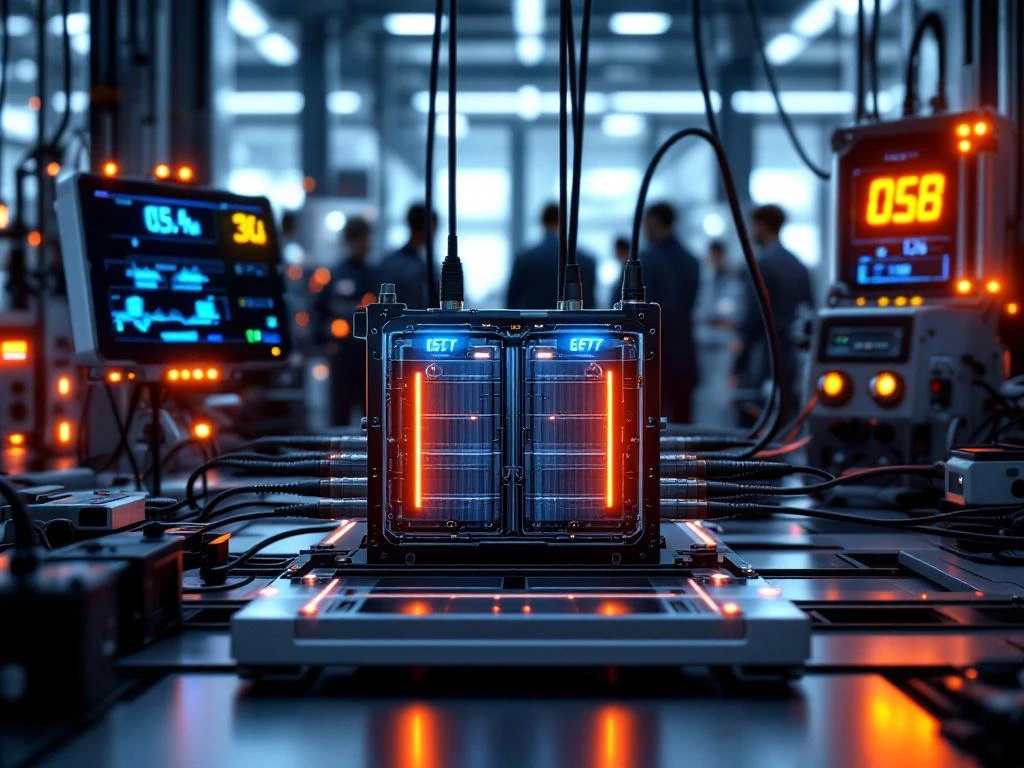When you’re pushing the limits on the track, every component of your high-performance vehicle needs to be reliable and safe. This includes your custom battery systems, which can pose significant fire risks if not properly protected. Battery fires in racing applications aren’t just about equipment loss—they can endanger lives and end seasons before they’ve truly begun.
Fire suppression in battery installations has become increasingly critical as energy storage systems grow more powerful and compact. Understanding your options for battery fire prevention can mean the difference between a minor incident and a catastrophic failure that puts your entire racing programme at risk.
1: Water-based suppression systems for battery fires
Water mist and fine water spray systems represent one of the most accessible fire suppression systems for battery installations. These systems work by rapidly cooling the battery cells and creating a barrier of steam that helps displace oxygen around the fire source. The key advantage lies in their ability to penetrate deep into battery compartments where traditional sprinkler systems might struggle.
However, water-based systems require careful consideration in racing applications. The electrical safety implications mean you’ll need proper isolation protocols and waterproof enclosures for critical components. Modern water mist systems use significantly less water than traditional sprinklers, reducing the risk of electrical damage whilst maintaining effectiveness against lithium battery safety threats.
For racing teams, the installation complexity and weight considerations make water-based systems more suitable for pit areas and charging stations rather than in-vehicle applications. The rapid cooling effect can help prevent thermal runaway from spreading between battery modules, making them particularly valuable for larger energy storage installations.
2: Inert gas flooding systems
Nitrogen, argon, and CO2 flooding systems work by reducing oxygen levels below the threshold needed for combustion. These systems are particularly effective in enclosed battery compartments where you can maintain the necessary gas concentration. The deployment mechanism typically involves rapid release through strategically placed nozzles that ensure even distribution throughout the protected space.
Industrial battery safety applications often favour inert gas systems because they leave no residue and won’t damage sensitive electronic components. For racing applications, the weight and space requirements of gas storage cylinders need careful consideration, but the clean suppression method makes them ideal for protecting high-value custom battery systems.
The effectiveness depends on achieving the right gas concentration quickly enough to suppress the fire before thermal runaway spreads. Modern systems include sophisticated monitoring to ensure proper deployment and can be integrated with automatic detection systems for rapid response.
3: Aerosol-based fire suppression technology
Condensed aerosol systems release microscopic particles that interfere with the chemical chain reaction of combustion. These systems are compact, lightweight, and don’t require extensive piping or storage tanks, making them particularly attractive for racing applications where every kilogram matters.
The activation methods range from thermal triggers that respond to heat to electrical activation integrated with your vehicle’s safety systems. Unlike water or foam, aerosol suppression won’t cause additional damage to your battery installation or surrounding components, which is crucial when dealing with expensive racing electronics.
For custom battery systems in racing applications, aerosol technology offers excellent coverage in confined spaces. The particles remain suspended for extended periods, providing ongoing suppression even if the initial fire source reignites. This extended protection is particularly valuable given the tendency of lithium batteries to experience multiple thermal events.
4: Foam suppression systems for large installations
Specialised foam agents designed for electrical fires create a blanket that both cools the battery cells and prevents oxygen from reaching the combustion zone. These systems are most effective in large-scale installations such as pit area charging stations or workshop environments where racing teams maintain their energy storage systems.
The application techniques vary depending on the battery chemistry and installation layout. Modern foam systems can be tailored to specific lithium chemistries, with different agents optimised for different cell types. The foam selection criteria include factors such as electrical conductivity, environmental impact, and cleanup requirements.
Fire protection methods using foam are particularly effective because they provide both immediate suppression and longer-term protection against reignition. For racing teams managing multiple vehicles and charging systems, foam suppression offers scalable protection that can cover large areas efficiently.
5: Thermal barriers and passive fire protection
Thermal barriers work by containing heat and preventing fire spread between battery modules. These passive systems include fire-resistant enclosures, specialised insulation materials, and compartmentalisation strategies that can buy crucial time for other suppression systems to activate.
The effectiveness of thermal barriers lies in their ability to slow down battery thermal runaway propagation. By isolating individual battery modules or sections, you can prevent a single cell failure from cascading through your entire energy storage system. This compartmentalisation approach is particularly valuable in racing applications where battery packs are often custom-designed with unique layouts.
Modern thermal barrier materials can withstand extreme temperatures whilst remaining lightweight enough for racing applications. The integration with active suppression systems creates multiple layers of protection, significantly improving overall energy storage safety in high-performance environments.
6: Automatic detection and early warning systems
Early detection systems form the foundation of effective fire suppression strategies. Smoke detection, thermal sensors, and gas detection systems can identify potential problems before they develop into full fires. For battery installations, specialised sensors can detect the off-gassing that often precedes thermal runaway events.
Integrated monitoring solutions combine multiple detection methods with automated response capabilities. These systems can simultaneously shut down charging, activate suppression systems, and alert team members to potential dangers. The rapid response capability is crucial in racing environments where seconds can make the difference between a contained incident and a major fire.
Modern detection systems can differentiate between normal operational heating and dangerous thermal events, reducing false alarms whilst maintaining sensitivity to genuine threats. This precision is essential in racing applications where unnecessary shutdowns can impact performance and race preparation schedules. Additionally, implementing critical ventilation requirements works alongside detection systems to prevent dangerous gas accumulation and maintain safe operating conditions.
7: Manual suppression tools and emergency procedures
Portable fire extinguishers specifically rated for electrical fires remain an essential component of any comprehensive fire safety strategy. Class C extinguishers using CO2 or dry chemical agents are suitable for battery fires, though specialised lithium battery extinguishers offer improved effectiveness for modern energy storage systems.
Emergency shutdown procedures should be clearly defined and regularly practised by all team members. These procedures include methods for safely disconnecting power, activating manual suppression systems, and coordinating with emergency services. The manual intervention techniques need to account for the unique hazards of battery fires, including toxic gas emissions and reignition potential.
Training programmes should cover the proper use of manual suppression tools and the recognition of situations where evacuation is the safest option. For racing teams, these procedures need to be adapted for both workshop and trackside environments, with different protocols for different scenarios.
Building your comprehensive fire safety strategy
Creating an effective fire safety strategy for your racing operation requires careful consideration of all these suppression methods and how they work together. The most robust approach typically combines multiple systems—perhaps thermal barriers for passive protection, automatic detection for early warning, and aerosol or gas suppression for active fire fighting.
The integration with your existing safety systems should be seamless, with clear protocols for different scenarios and regular testing to ensure everything works when needed. Your fire safety strategy should evolve with your battery technology and racing requirements, with regular reviews to incorporate new suppression technologies and lessons learned from the field.
Remember that the best fire suppression system is one that never needs to be used. Proper battery management, regular maintenance, and adherence to safety protocols remain your first line of defence. When you’re ready to develop a comprehensive fire safety strategy tailored to your specific racing applications and custom energy storage requirements, don’t hesitate to contact us for expert guidance on protecting your investment and your team.



